Which of the following dicarboxylic acid will give cycle alkanone on heating?
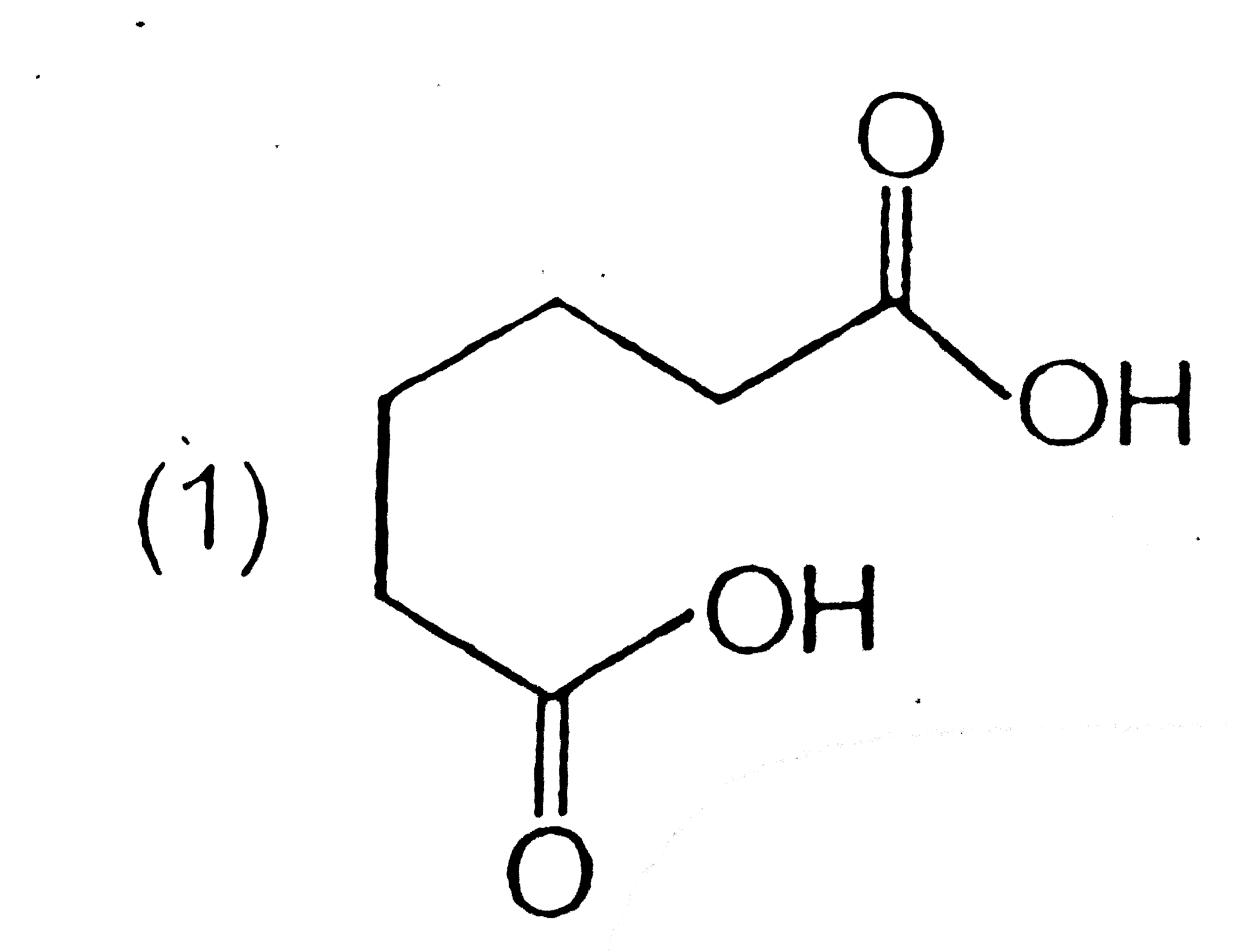
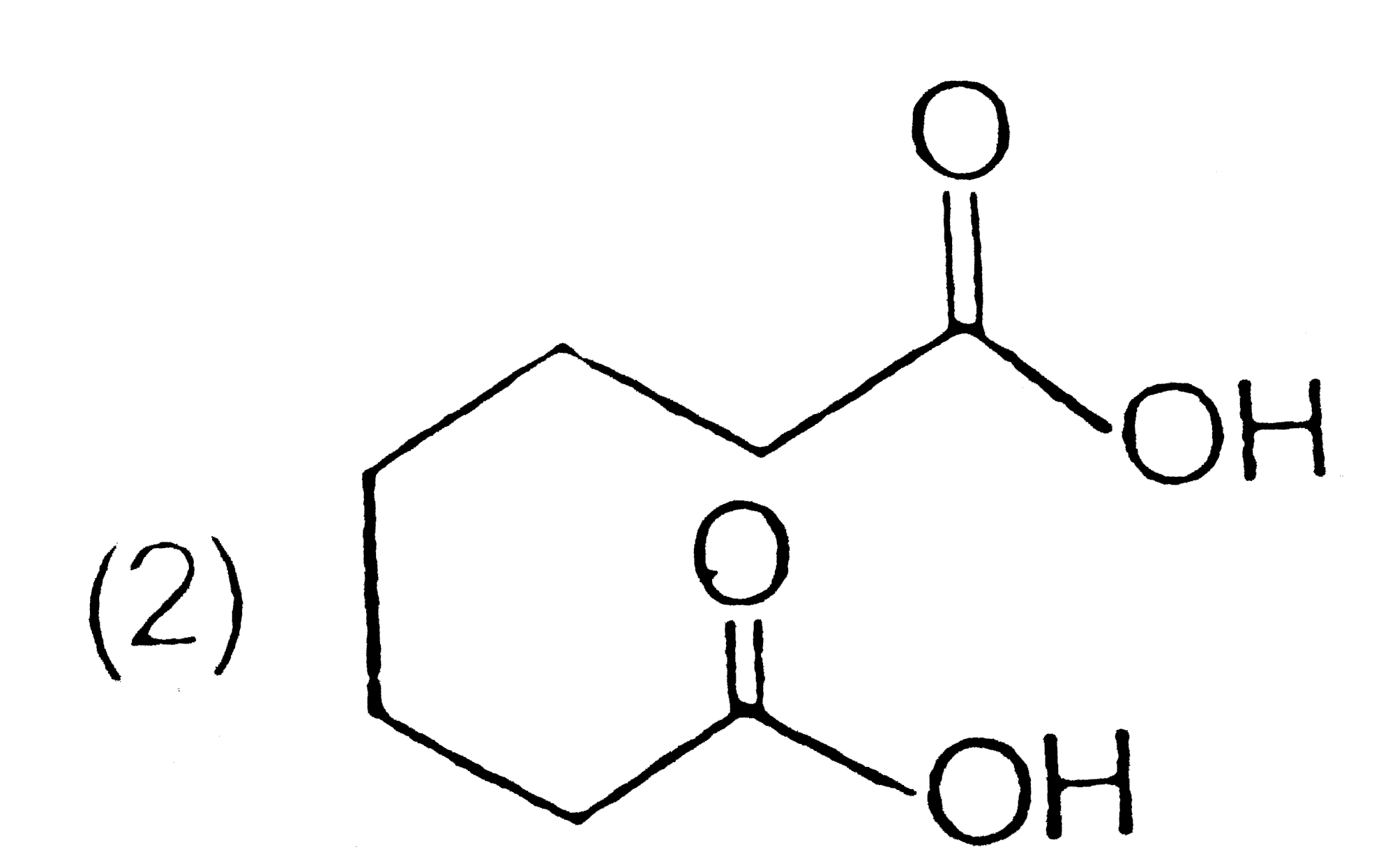
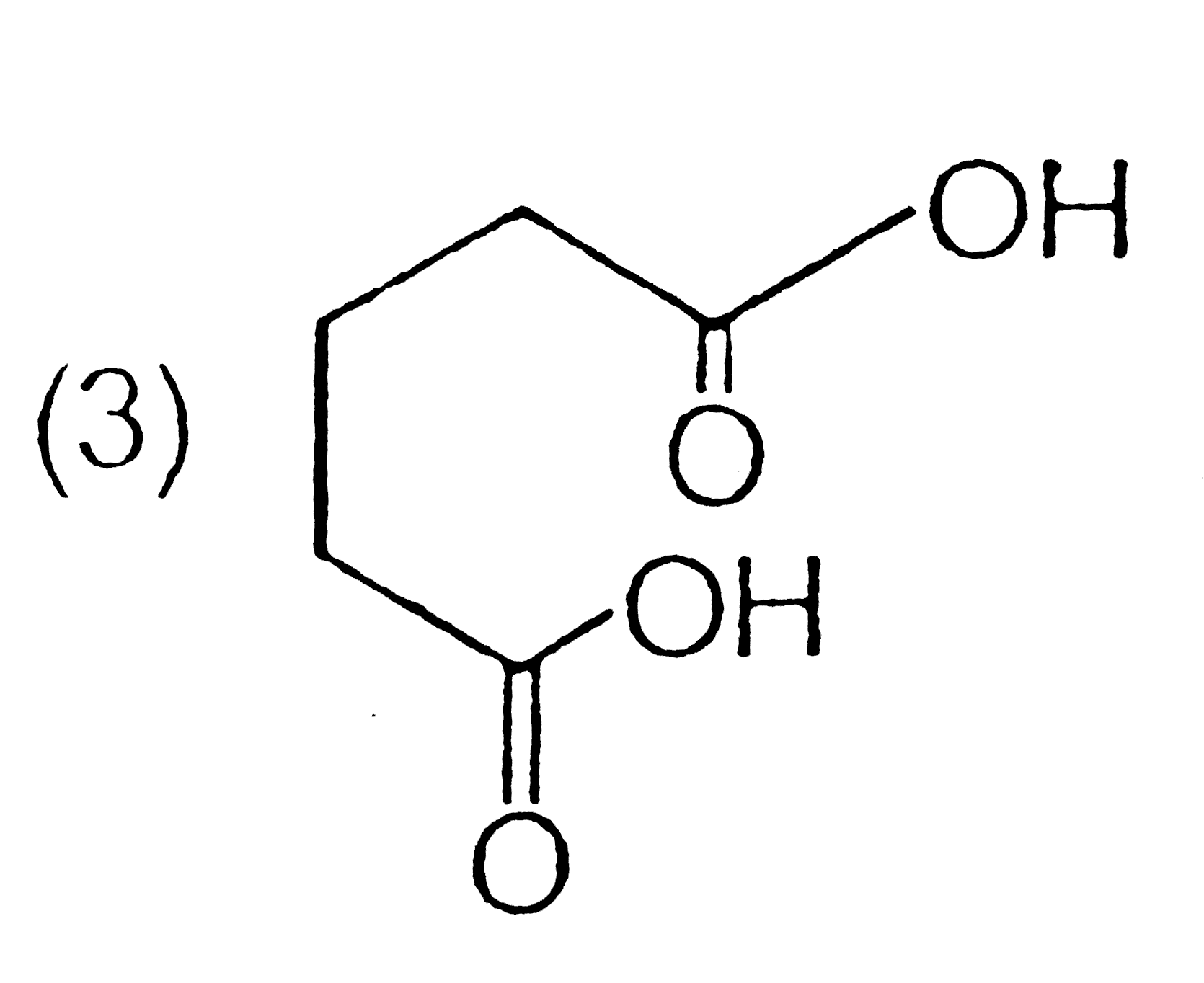
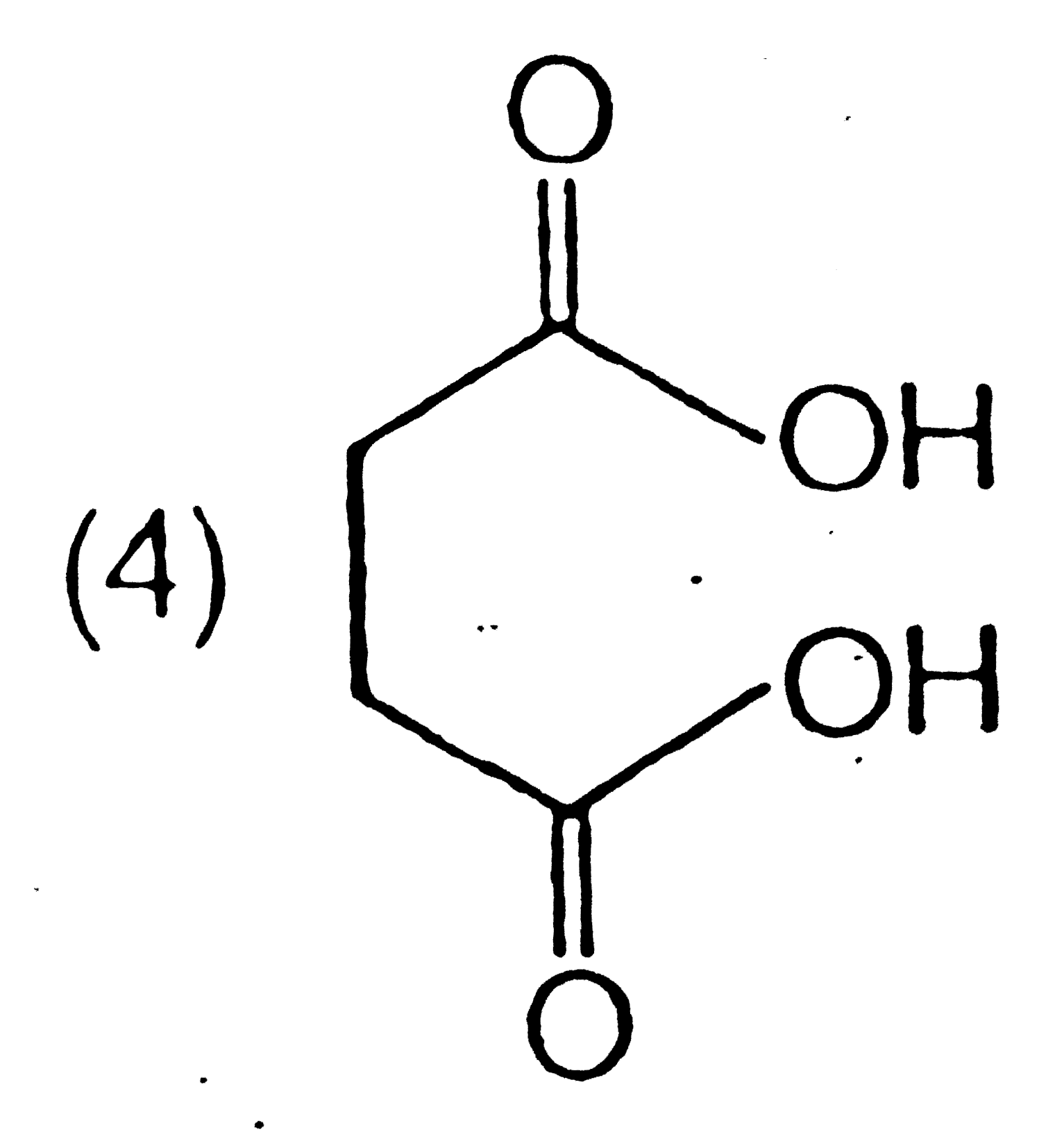
The correct Answer is:A, B
To determine which dicarboxylic acids will yield cyclic alkanones upon heating, we can analyze the reactions of various dicarboxylic acids.
1. Understanding Dicarboxylic Acids:
Dicarboxylic acids have two carboxylic acid (-COOH) groups. When heated, they can undergo cyclization, leading to the formation of cyclic ketones.
2. Analyzing the First Dicarboxylic Acid:
Let's consider the first dicarboxylic acid. Upon heating, it loses carbon dioxide (CO2) and the remaining structure rearranges to form a five-membered ring. The reaction can be represented as follows:
- The -COOH group loses CO2, and the adjacent hydrogen shifts to form a double bond with the carbon, resulting in a five-membered ring with a carbonyl group (C=O).
- This results in the formation of cyclopentanone.
3. Analyzing the Second Dicarboxylic Acid:
Now, let's examine the second dicarboxylic acid. Similar to the first, upon heating, it also loses CO2. The rearrangement leads to the formation of a six-membered ring:
- The -COOH group loses CO2, and the adjacent hydrogen shifts, forming a double bond and resulting in a six-membered ring with a carbonyl group.
- This results in the formation of cyclohexanone.
4. Analyzing the Third Dicarboxylic Acid:
For the third dicarboxylic acid, upon heating, it loses CO2, but the resulting structure leads to a four-membered ring:
- The -COOH group loses CO2, and the adjacent hydrogen shifts to form a double bond, but this results in a four-membered ring (which is not stable).
- Therefore, this reaction does not yield a preferred cyclic ketone.
5. Analyzing the Fourth Dicarboxylic Acid:
Lastly, for the fourth dicarboxylic acid, upon heating, it also loses CO2. However, it leads to the formation of a three-membered ring:
- The -COOH group loses CO2, and the adjacent hydrogen shifts, resulting in a three-membered ring (which is also not stable).
- Hence, this reaction does not yield a preferred cyclic ketone.
6. Conclusion:
From the analysis, the first and second dicarboxylic acids yield cyclopentanone and cyclohexanone, respectively, upon heating. The third and fourth dicarboxylic acids do not yield stable cyclic ketones.
Final Answer:
The dicarboxylic acids that will give cyclic alkanones upon heating are the first and second options.
Dicarboxylic acids have two carboxylic acid (-COOH) groups. When heated, they can undergo cyclization, leading to the formation of cyclic ketones.
Let's consider the first dicarboxylic acid. Upon heating, it loses carbon dioxide (CO2) and the remaining structure rearranges to form a five-membered ring. The reaction can be represented as follows:
- The -COOH group loses CO2, and the adjacent hydrogen shifts to form a double bond with the carbon, resulting in a five-membered ring with a carbonyl group (C=O).
- This results in the formation of cyclopentanone.
Now, let's examine the second dicarboxylic acid. Similar to the first, upon heating, it also loses CO2. The rearrangement leads to the formation of a six-membered ring:
- The -COOH group loses CO2, and the adjacent hydrogen shifts, forming a double bond and resulting in a six-membered ring with a carbonyl group.
- This results in the formation of cyclohexanone.
For the third dicarboxylic acid, upon heating, it loses CO2, but the resulting structure leads to a four-membered ring:
- The -COOH group loses CO2, and the adjacent hydrogen shifts to form a double bond, but this results in a four-membered ring (which is not stable).
- Therefore, this reaction does not yield a preferred cyclic ketone.
Lastly, for the fourth dicarboxylic acid, upon heating, it also loses CO2. However, it leads to the formation of a three-membered ring:
- The -COOH group loses CO2, and the adjacent hydrogen shifts, resulting in a three-membered ring (which is also not stable).
- Hence, this reaction does not yield a preferred cyclic ketone.
From the analysis, the first and second dicarboxylic acids yield cyclopentanone and cyclohexanone, respectively, upon heating. The third and fourth dicarboxylic acids do not yield stable cyclic ketones.
The dicarboxylic acids that will give cyclic alkanones upon heating are the first and second options.
Topper's Solved these Questions
- ALDEHYDES, KETONES AND CARBOXYLIC ACIDS Book:AAKASH INSTITUTEChapter:ALDEHYDES, KETONES AND CARBOXYLIC ACIDS Exercise:Assignment (SECTION -D Linked Comprehension type Questions)
Explore 6 Videos
- ALDEHYDES, KETONES AND CARBOXYLIC ACIDS Book:AAKASH INSTITUTEChapter:ALDEHYDES, KETONES AND CARBOXYLIC ACIDS Exercise:Assignment SECTION - E Assertion - Reason Type Questions)
Explore 7 Videos
- ALDEHYDES, KETONES AND CARBOXYLIC ACIDS Book:AAKASH INSTITUTEChapter:ALDEHYDES, KETONES AND CARBOXYLIC ACIDS Exercise:Assignment (SECTION -B OBJECTIVE TYPES QUESTIONS (ONE OPTION IS CORRECT)
Explore 24 Videos
- ALCOHOLS, PHENOLS AND ETHERS Book:AAKASH INSTITUTEChapter:ALCOHOLS, PHENOLS AND ETHERS Exercise:Try Yourself
Explore 5 Videos
- AMINES Book:AAKASH INSTITUTEChapter:AMINES Exercise:Assignment Section -J (Aakash Challengers Questions)
Explore 9 Videos
Similar Questions
Knowledge Check
Which of the following is a dicarboxylic acid ?
ALactic acidBCitric acidCBenzoic acidDAdipic acidWhich of the following dicarboxylic acids gives a cyclic anhydride on heating?
ACH2(COOH)2B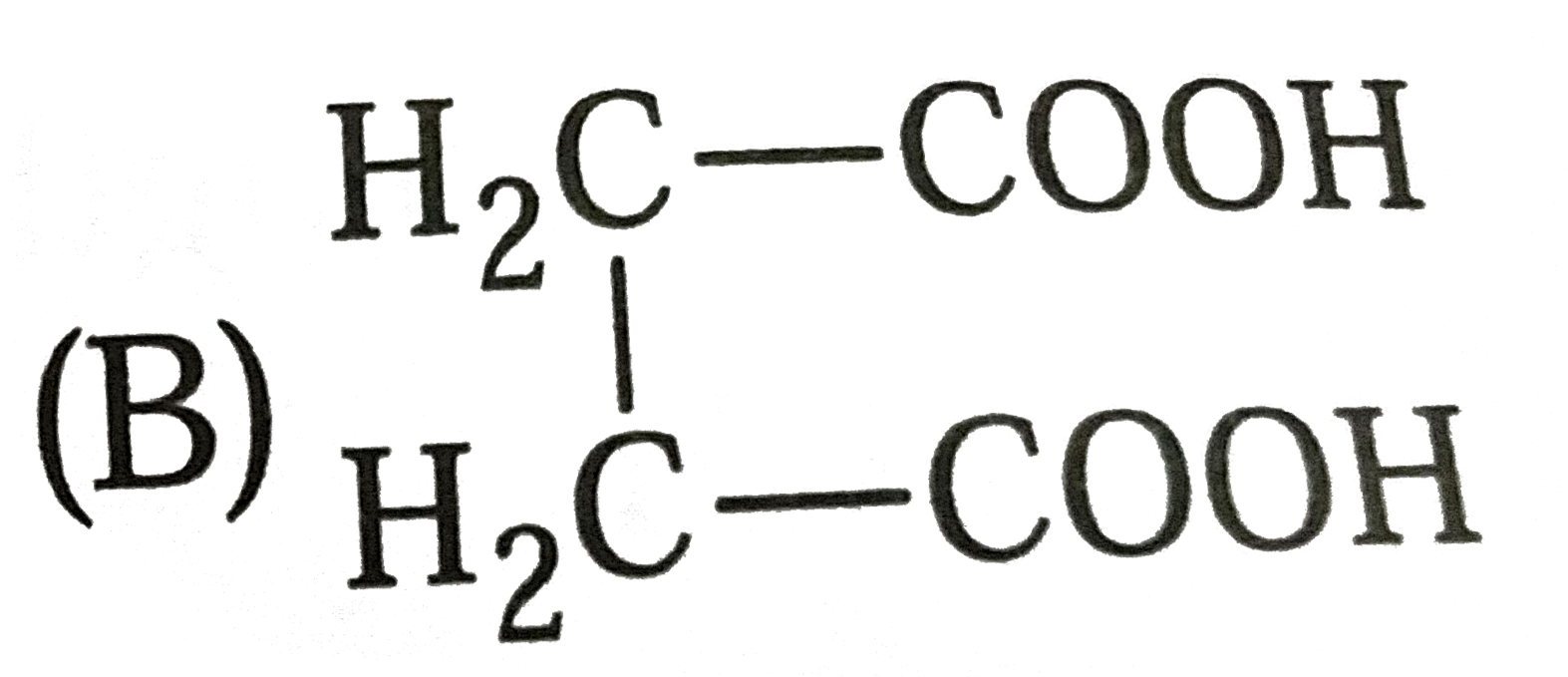 CHOOC(CH2)4COOHDHOOC(CH2)5COOH
CHOOC(CH2)4COOHDHOOC(CH2)5COOHDicarboxylic acids have two carboxylic groups, e.g.,
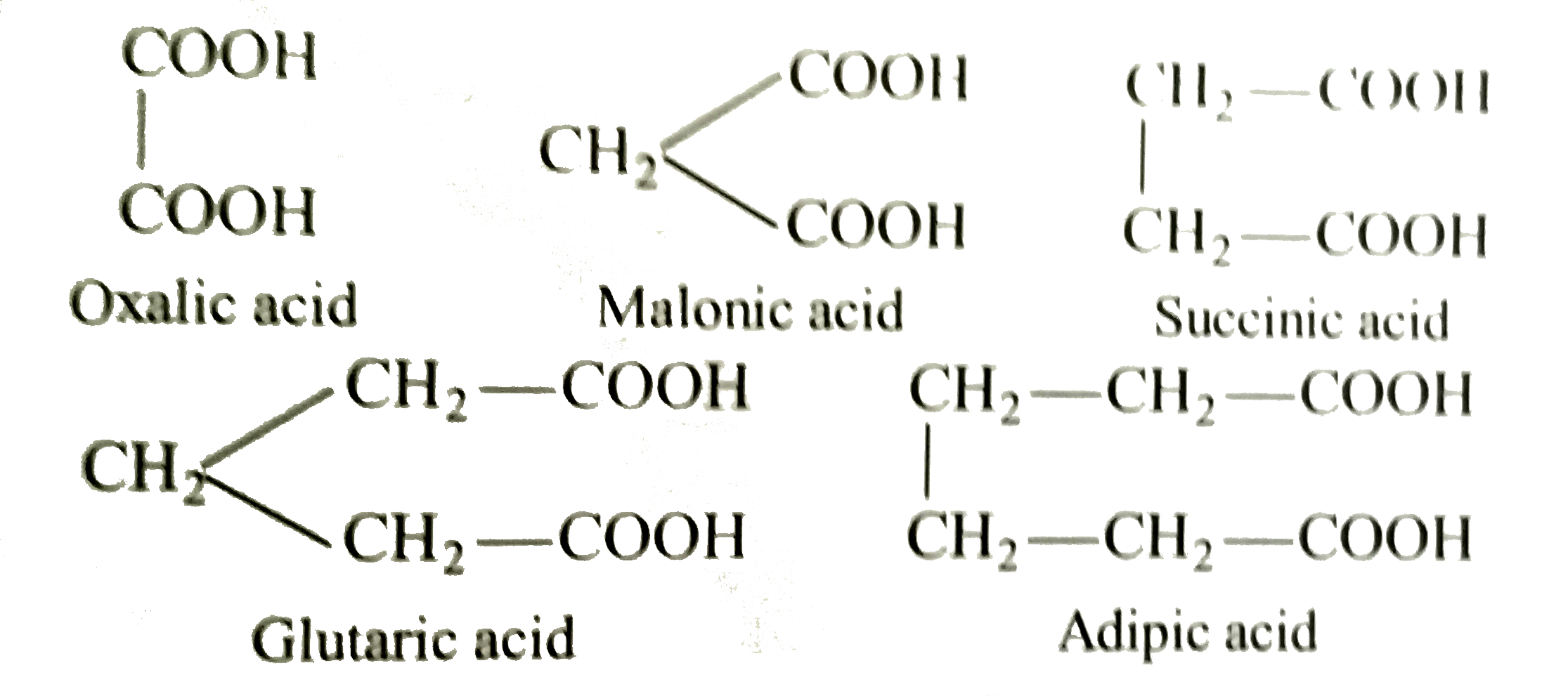
Acidity of dicarboxylic acid depends upon the stability of intermediate ion and upon the distance between two carboxylic groups. Shorter the distance between two carboxylic groups, greater is the acidic character. Melting point of these acids depends on the symmetry. Greater the symmetry, higher will be the melting point.
Dicarboxylic acids on heating give monocarboxylic acid allkanes, cyclic ketones depending on the conditions
Which of the following dicarboxylic acids, will give monocarboxylic acid on heating ?AMalonic acidBSuccinic acidCGlutaric acidDAdipic acid
Which dicarboxylic acid gives AcOH on stron heating ?
View SolutionDicarboxylic acid cycle is also known as
View SolutionWhich of the following dicarboxylic acids contains the most acidic hydrogen ?
View SolutionWhich of the following ammonium salt will not give acid on heating?
View SolutionDicarboxylic acids have carboxylic groups e.g.
HOOC-COOH,oxalic acid
HOOC−CH2−COOH-Maloic acid
HOOC-(CH2)3-COOH-Glutaric acid
HOOC,(CH2)4-COOH,-Adipic acid
Acidity of dicarboxylic acids depends upon the stabillity of intermediate ion and upon the distance between two carboxylic groups. shorter the distance between two carboxylic groups, greater is the acididc character. Melting point of the acids depends on the symmetry. greater the symmetry, higher will be the mp. Dicarboxylic acids on heating give monocarboxylic acid, alkanes, cyclic ketones dependings on the conditions.
Which of the following dicarboxylic acid is used in the manufactures of nylon-6,6?
View Solution

